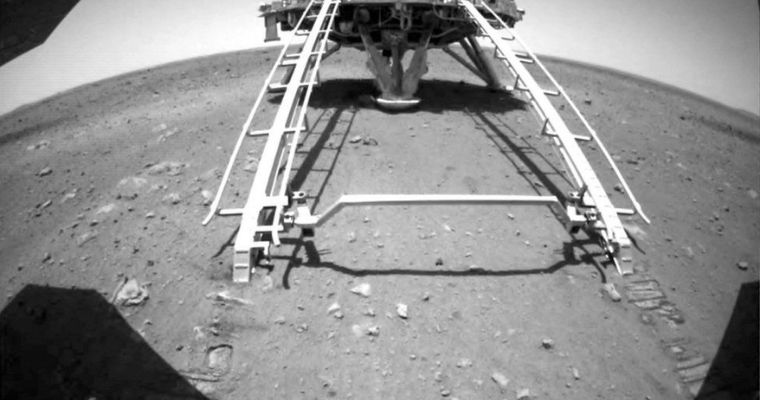China’s remote-controlled rover, which managed to land on Mars earlier a week, has driven down from its landing surface to the planet. This is making China the second country after the US to operate their rover on Mars. The purpose of the Zhurong rover is to study the plant’s surface rock and the atmosphere there. It will also find the signs of life along with the trace of water or ice.
China’s Tianwen-1 mission is coming up with a lander, rover, and orbiter. It was launched in July last year.
The deputy chief commander for this mission, Zhang Yuhua says, this river is designed to operate for at least 92 Earth days. It would also share its data through its orbiter.
Zhang Yuhua said, “We hope we can get a comprehensive coverage of Martian topography, landform and environment, and the exploratory data of the radar detecting the Martian subsurface during one Martian year.”
By doing this, their country will have its own abundant and first-hand data about the resources on Mars. This robot, with its 240kg solar-powered wheel, got the name after the Chinese mythical God of Fire. It will continue to explore the Utopia Planitia in the northern hemisphere of Mars.
This colossal basin, more than 3000 km wide, was likely to form an impact on the planet’s history. There is also some evidence which points towards the fact that it had an ocean long ago. Remote sensing with the satellites indicates that there are significant stores of ice at the deeper level.
Utopia Planitia is the place where NASA landed its mission Viking-2 in 1976. The US landed this much larger Perseverance robot in February. Its roving mission is also getting underway.
The space agency of Europe, which has failed twice with its landing attempts now, will send a rover named Rosalind Franklin to Mars next year. It will be a joint project with Russia.










Comments are closed.